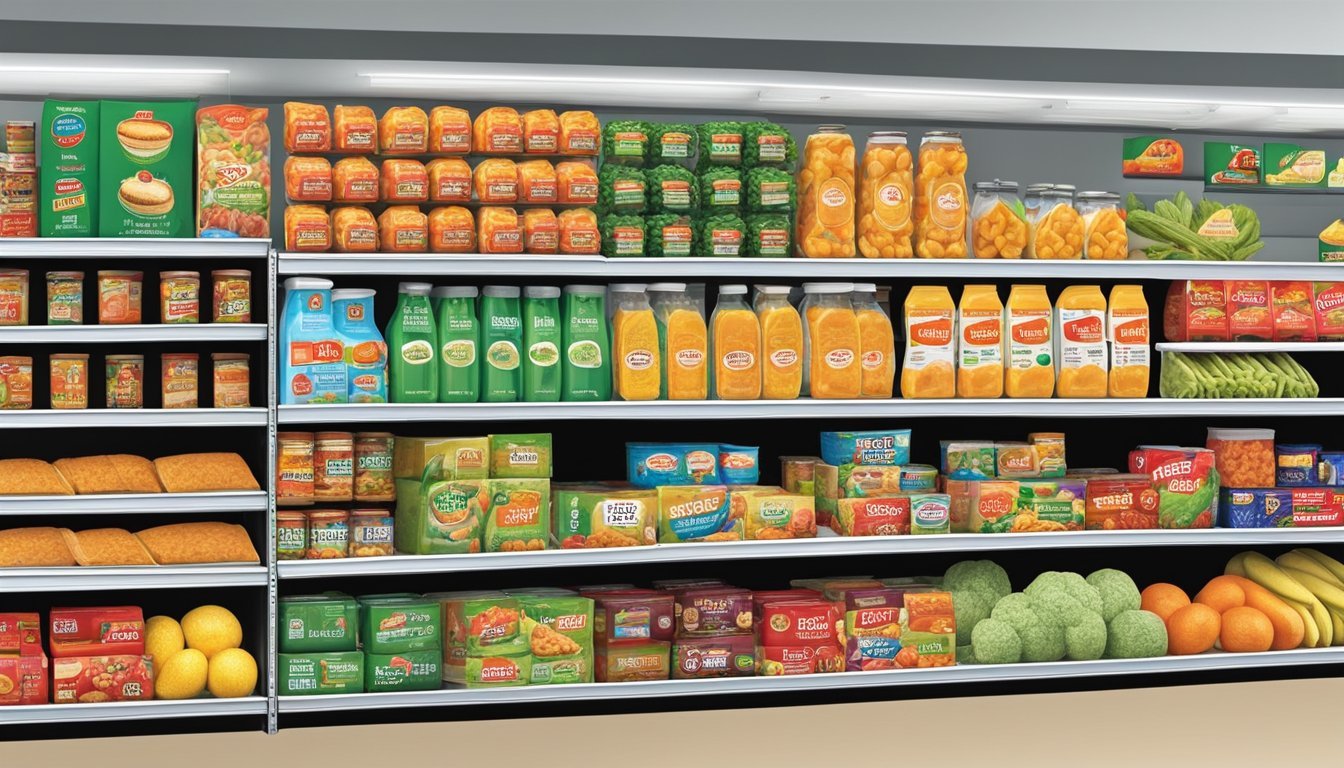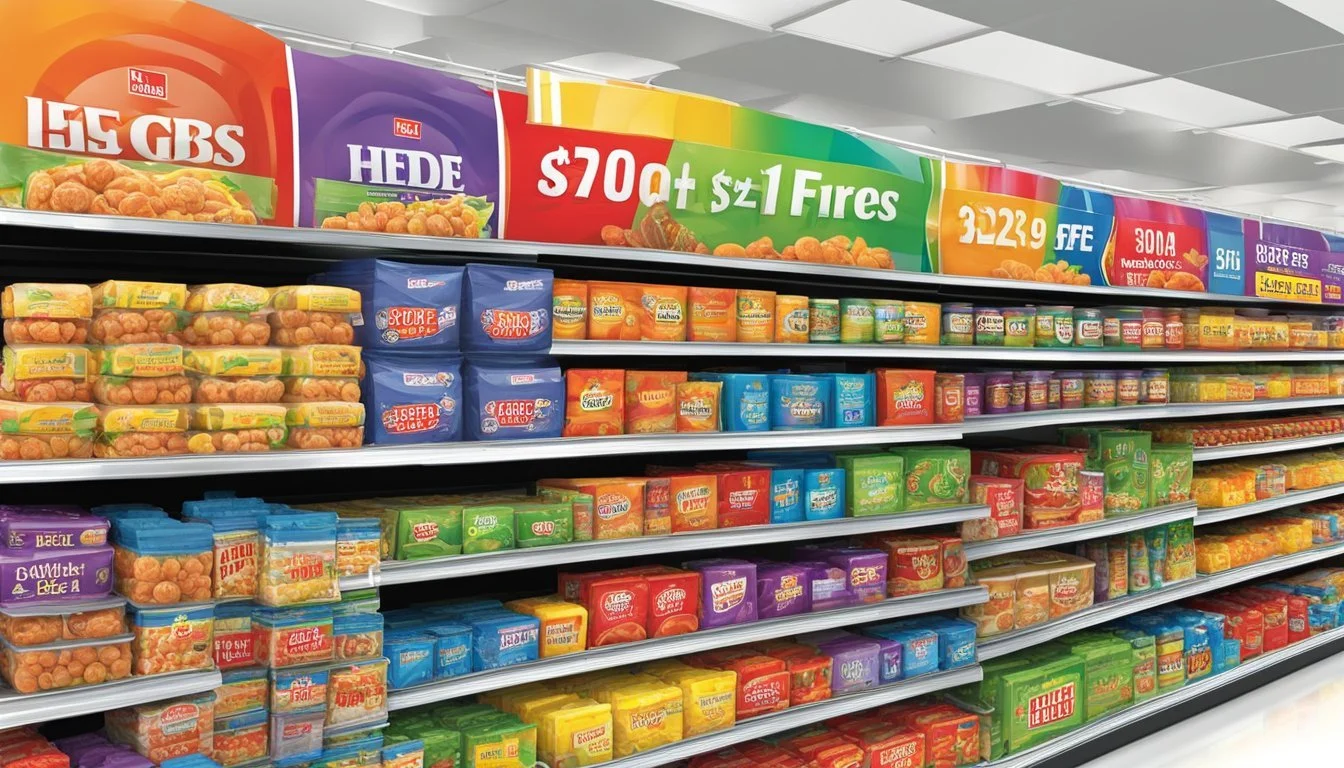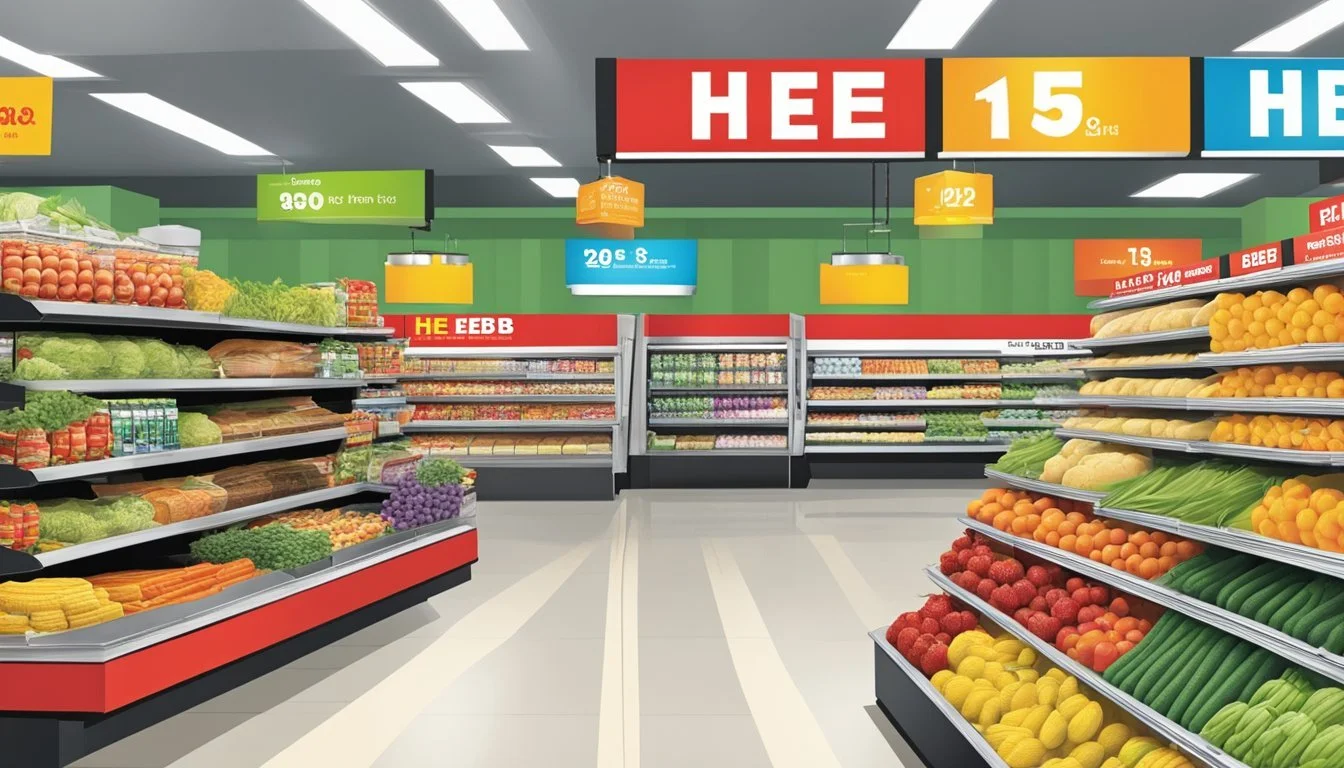Is H-E-B Cheaper Than Lucky Supermarkets?
A cost comparison of two popular grocery chains
When it comes to grocery shopping, finding the best value is a top priority for many consumers. H-E-B and Lucky Supermarkets are two popular chains that often come up in discussions about affordable options. Both stores have loyal customer bases and aim to provide quality products at competitive prices.
While H-E-B generally offers lower prices on many items compared to Lucky Supermarkets, the overall cost comparison can vary depending on specific products and locations. H-E-B, primarily operating in Texas, is known for its commitment to value and has consistently ranked high in customer satisfaction surveys. Lucky Supermarkets, with a presence in Northern California, also strives to offer competitive pricing but may have slightly higher costs on some items.
Shoppers looking to maximize their savings should consider factors beyond just price tags. Each store's selection, product quality, location convenience, and available promotions can significantly impact the overall shopping experience and value proposition. Comparing weekly ads and taking advantage of loyalty programs can help customers make the most cost-effective choices at either H-E-B or Lucky Supermarkets.
Comparative Analysis of H-E-B and Lucky Supermarkets Pricing
H-E-B and Lucky Supermarkets employ distinct pricing strategies to attract customers and provide value. Their approaches impact prices across various product categories.
General Price Trends
H-E-B focuses on competitive pricing while emphasizing local sourcing and customer service. This strategy may result in slightly higher prices for some items, but it often translates to fresher produce and unique regional products.
Lucky Supermarkets, on the other hand, aims to position itself as a budget-friendly option. They frequently offer lower prices on staple items to draw in cost-conscious shoppers.
Both chains use promotional tactics like weekly sales and loyalty programs to provide additional savings. H-E-B's larger scale may allow for better bulk purchase discounts from suppliers.
Price Comparison by Product Category
In the produce section, H-E-B often has a slight edge due to its emphasis on local sourcing. Fresh fruits and vegetables may be priced competitively while offering superior quality.
Lucky Supermarkets typically offers lower prices on packaged goods like cereal, pasta, and canned items. Their store-brand products are often significantly cheaper than national brands.
For dairy products, prices can vary. H-E-B might have better deals on specialty cheeses, while Lucky could offer cheaper milk and eggs.
Meat prices tend to be comparable, with both chains running frequent promotions. H-E-B may have a wider selection of premium cuts, potentially at higher price points.
Organic products are generally more affordable at Lucky Supermarkets, though H-E-B's selection might be more extensive.
Product Variety and Quality
H-E-B and Lucky Supermarkets offer diverse product ranges and prioritize quality in their offerings. Both stores cater to various dietary needs and preferences, providing customers with ample choices.
Diversity of Brand and Product Options
H-E-B boasts an extensive selection of products, including national brands and their own private label offerings. The store's Hill Country Fare and H-E-B Organics lines provide budget-friendly alternatives without compromising quality. H-E-B's Primo Picks showcase unique, locally-sourced items.
Lucky Supermarkets also offers a wide array of products, though their selection may be less extensive than H-E-B's. Both stores carry organic, gluten-free, and specialty items to accommodate different dietary requirements. H-E-B's Central Market concept provides an even broader range of gourmet and international products.
Quality Assurance and Freshness
H-E-B is known for its commitment to quality and freshness, particularly in produce and meats. The store's rigorous quality control measures ensure that products meet high standards. H-E-B's partnership with local farmers and producers helps maintain the freshness of their offerings.
Lucky Supermarkets also prioritizes quality, though specific information about their quality assurance processes is less readily available. Both stores strive to provide fresh produce and high-quality meats to their customers. H-E-B's emphasis on locally-sourced products may give them an edge in terms of freshness for certain items.
Store Brand and Private Labels
H-E-B and Lucky Supermarkets both offer store brands and private labels to provide customers with budget-friendly options. These exclusive product lines aim to deliver quality at competitive prices.
H-E-B's Exclusive Brands
H-E-B boasts an impressive array of private label products. The company's flagship H-E-B brand covers a wide range of grocery items. Hill Country Fare serves as their value-oriented line, offering everyday essentials at lower price points. For health-conscious shoppers, H-E-B Organics provides organic alternatives.
Central Market, H-E-B's upscale brand, caters to gourmet tastes. Primo Picks showcases unique, often locally-sourced items. These diverse brands allow H-E-B to meet various customer needs and preferences while maintaining competitive pricing.
Private Labels and Their Value Proposition
Private labels offer significant savings compared to national brands. H-E-B's store brands typically cost 15-20% less than comparable name-brand products. This pricing strategy helps budget-conscious shoppers stretch their dollars further.
Quality is a key focus for H-E-B's private labels. The company invests in product development and testing to ensure their store brands meet or exceed national brand standards. This commitment to quality, combined with lower prices, creates a compelling value proposition for customers.
H-E-B's extensive private label selection covers most product categories, from pantry staples to fresh produce and household items. This broad range gives shoppers ample opportunities to save across their entire grocery list.
Customer Experience and Service
H-E-B and Lucky Supermarkets prioritize customer satisfaction through various initiatives. Their approaches to service and loyalty programs shape the shopping experience for their customers.
Checkout Efficiency and Customer Service
H-E-B emphasizes efficient checkout processes to minimize wait times. The Texas-based chain invests in technology and staff training to keep lines moving quickly. H-E-B employees are known for their friendly demeanor, reflecting the company's commitment to Texas pride and community involvement.
Lucky Supermarkets also strives for prompt service at checkout. They maintain adequate staffing during peak hours to manage customer flow effectively. Both chains train their employees to assist customers with product inquiries and provide a positive shopping experience.
Rewards Programs and Customer Loyalty
H-E-B offers a digital rewards program called H-E-B Points. Customers earn points on purchases, which can be redeemed for discounts or free products. The program integrates with the H-E-B mobile app, allowing easy tracking of savings and personalized offers.
Lucky Supermarkets provides a loyalty card program. Members receive special discounts and access to exclusive promotions. The program aims to encourage repeat visits and increase customer retention.
Both chains use their loyalty programs to gather customer data, enabling them to tailor promotions and improve inventory management. This data-driven approach helps enhance the overall shopping experience and build long-term customer relationships.
Special Offers and Discounts
H-E-B and Lucky Supermarkets both provide various ways for customers to save money through special promotions and discounts. These offerings can significantly impact overall grocery costs for budget-conscious shoppers.
Weekly Deals and Seasonal Promotions
H-E-B runs robust weekly ads featuring numerous discounted items across departments. Their "Combo Loco" promotions allow customers to buy one product and get another free or at a reduced price. Seasonal sales align with holidays and events throughout the year.
Lucky Supermarkets also offers weekly specials, though details on their specific promotions are less readily available. Both chains likely provide deeper discounts on seasonal items to move inventory.
Savvy shoppers can maximize savings by planning meals around featured sale items each week. Stocking up on non-perishables when prices are lowest can lead to long-term budget benefits.
Coupon Policies and Price Matching
H-E-B accepts manufacturer coupons and provides digital coupons through their app and website. They offer personalized deals based on purchase history. H-E-B does not typically price match competitors.
Lucky Supermarkets' coupon and price matching policies are not widely publicized. Customers should check with their local store for specific details.
Both chains may offer additional discounts for seniors, students, or military members on certain days. Loyalty programs can provide extra savings opportunities for frequent shoppers.
Comparing each store's current promotions and factoring in personal shopping habits is key to determining which offers the best value for individual customers.
Regional Presence and Impact
H-E-B and Lucky Supermarkets have distinct regional footprints that shape their market influence and community connections. Their expansion strategies and local presence play crucial roles in their competitive positions and customer loyalty.
Market Presence in Texas and Beyond
H-E-B dominates the Texas grocery landscape with over 340 stores across the state. The chain has become deeply intertwined with Texan identity and pride. H-E-B's Central Market subsidiary caters to upscale shoppers in major Texas cities.
Lucky Supermarkets operates primarily in Northern California, with around 70 locations. The chain focuses on serving diverse communities in the San Francisco Bay Area and surrounding regions.
H-E-B's Texas-centric approach has allowed it to tailor offerings to local tastes and preferences. Lucky Supermarkets similarly adapts its product mix to suit the multicultural demographics of its Northern California market.
Expansion Strategies and Local Influence
H-E-B pursues aggressive expansion within Texas, opening 10 new stores in the past year alone. The company's growth strategy emphasizes strengthening its core Texas market rather than rapid out-of-state expansion.
• Community involvement initiatives • Partnerships with local suppliers • Customized store formats for different neighborhoods
Lucky Supermarkets, as part of The Save Mart Companies, focuses on steady growth within its existing Northern California footprint. The chain aims to enhance its presence in current markets rather than expanding to new regions.
Both retailers prioritize community engagement and local sourcing to build strong connections with their customer base. This approach helps them compete effectively against national chains in their respective markets.
Conclusion
H-E-B and Lucky Supermarkets both offer competitive pricing in the grocery market. H-E-B's focus on local partnerships often leads to lower produce costs. This can result in savings for shoppers.
Lucky Supermarkets provides value through various promotions and discount programs. Their newsletter coupons and loyalty rewards can offset some price differences.
Pricing strategies differ between the two chains. Regional factors and product selection influence overall costs at each store. Shoppers may find certain items cheaper at one retailer versus the other.
The best value depends on individual shopping habits and preferences. Comparing specific product prices and considering available discounts is crucial. Customers should also factor in store location and convenience.
Both H-E-B and Lucky Supermarkets strive to provide affordable options for consumers. Regular price checks and strategic shopping can help maximize savings at either grocery store.









